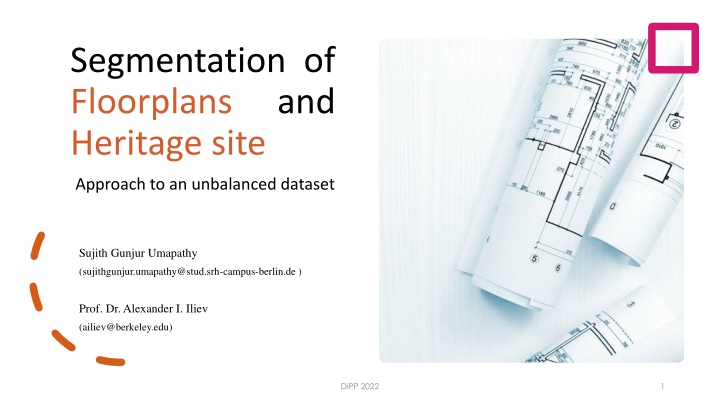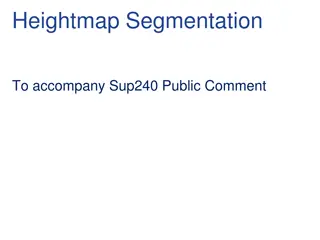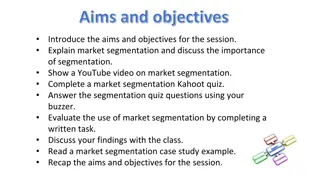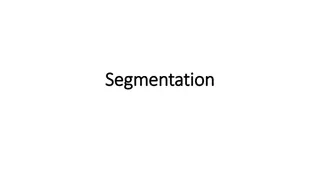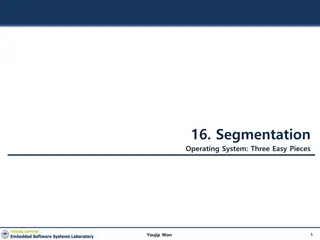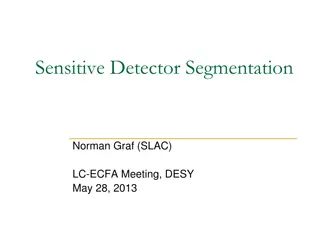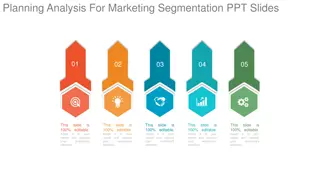Segmentation of Floorplans Heritage Site
Discussing the segmentation of floorplans on a heritage site and an approach to handling unbalanced datasets for improved analysis and insights. The study by Sujith Gunjur Umapathy delves into the challenges and strategies involved in this process, offering valuable insights for researchers and practitioners in the field of Heritage site analysis.
Download Presentation

Please find below an Image/Link to download the presentation.
The content on the website is provided AS IS for your information and personal use only. It may not be sold, licensed, or shared on other websites without obtaining consent from the author.If you encounter any issues during the download, it is possible that the publisher has removed the file from their server.
You are allowed to download the files provided on this website for personal or commercial use, subject to the condition that they are used lawfully. All files are the property of their respective owners.
The content on the website is provided AS IS for your information and personal use only. It may not be sold, licensed, or shared on other websites without obtaining consent from the author.
E N D
Presentation Transcript
Segmentation of Floorplans Heritage site and Approach to an unbalanced dataset Sujith Gunjur Umapathy (sujithgunjur.umapathy@stud.srh-campus-berlin.de ) Prof. Dr. Alexander I. Iliev (ailiev@berkeley.edu) DiPP 2022 1
Semantic Segmentation Semantic Segmentation is basically the task of classifying each pixel of an image into a particular class. A class can be anything, that we are interested in After wall Segmentation within an image. Eg: Walls, Rooms, Doors, Window Does not differentiate pixels of different instances, if it belongs to the same class Eg: Wall Type A, Wall Type B -> Wall class DiPP 2022 2
Segmenting the Floor Plan Helps in identifying where the important elements are present in a floorplan (i.e. Walls, Doors,Windows, Text elements like measurements & description) Primarily helps us in the process of digitizing the floorplan (vector image), which gives a high degree of freedom and operational flexibility [Fig: Raster image vs Vector Image] DiPP 2022 3
Benefits of Segmenting the Floorplan Helps in converting floorplans to digital assets Using Deep Learning algorithms, we can identify walls, doors and windows automatically and individually resulting in the following advantages: * Room Size Estimation * Optimal positioning for lighting and electrical switches * Electrical linings be determined. Does all the heavy lifting (i.e. Digitalization, Planning, and Estimations on a floorplan) result in cost reduction. DiPP 2022 4
Measure of Performance IoU Score IoU basically stands for Intersection over Union It is a good metric to measure the overlap between an original image & its prediction If the prediction is completely correct, then IoU = 1 If the prediction is completely wrong, the IoU = 0, which means there is no overlap at all DiPP 2022 5
Floorplan Dataset & its Distribution (Dodge, Xu, & Stenger, 2017) (de las Heras, Terrades, Robles, & S anchez, 2015) (Lin, Goyal, Girshick, He, & Doll r, 2017) (Kalervo, Ylioinas, H iki , Karhu, & Kannala, 2019) Images Room Wall Windows/ Doors/ Icons 500 NA NA NA 122 1320 6089 2345 815 7466 16139 15040 5000 68877 147024 136676 Comparison against potential datasets DiPP 2022 6
Challenges CubicCasa 5K dataset is an unbalanced dataset Class labels like doors & windows have more instances than other class labels Results in a model drift towards class labels of higher instances Important classes like rooms are deprioritized Overall the IoU score is affected DiPP 2022 7
Solution to Segmentation The most popular U-Net architecture is chosen for the training process Floorplan images are augmented to help the DL model train better and generalize Floorplans are tiled to a block size of 256 x 256 px Loss is computed using the combined Focal loss and Jaccard Loss DiPP 2022 8
Evaluating the model Pass tile image through U-Net architecture Perform prediction on each tile Tile the image 256x256 Receive tiled predictions Merge the tile to original Image size Read the image DiPP 2022 9
Results Train Mean IoU Validation Mean IoU Test Mean IoU 84% * 82% 81% Model Recall Precision Dataset - Rooms 80.9 78.5 CubiCasa 5K (Kalervo, 2019) 90.0 87.6 Ours 91.3 85 DiPP 2022 10 * Weighted 4 class Rooms, Walls, Doors and Windows
Results DiPP 2022 11
Results GT Prediction GT Prediction DiPP 2022 12
Summary Unbalanced dataset can have adverserial affect during training causing a model drift Balancing class labels can be done by either reducing the dataset size or by combining loss functions Loss functions can consider the imbalance factor and penalise accordingly Jaccard Loss + Focal loss was proved to be effective in minimising the dataset imbalance issue on CubiCasa 5K dataset DiPP 2022 13
